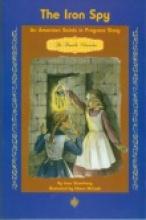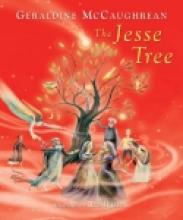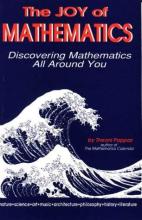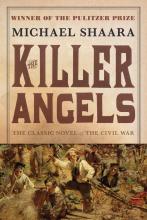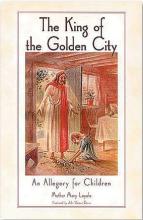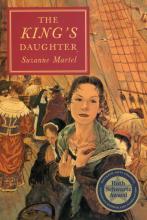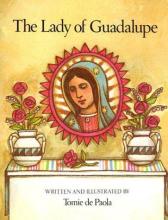No name
The Iron Spy
In this first book of the new series The Danville Chronicles, Joan Stromberg has found a fun and exciting way to teach faith to your children ten years and older. It will capture their imagination and keep their minds thinking.
This book takes place in the town of Danville, Pennsylvania in 1875. The biggest Iron Mill in town is owned by Mr. Graves. It has just exploded and Mary Mulhearn, an Irish immigrant, and her blind friend Kathleen Dodd are trying to find evidence that Mary's father, Mr. Mulhearn, is innocent of blowing up the Iron Mill and becoming a Molly Maguire. Although Mary's family knows he would never turn into a Molly Maguire and blow up the Iron Mill were he worked before it exploded, they also know that their realization of his innocence alone will not be enough to win the trial against Mr. Mulhearn.
Then one day, to make things more puzzling for Mary, a man who calls himself Sean McGinty shows up at Mary's door and says he is an immigrant right off a boat from Ireland and finds a place to stay at the Mulhearns' house. But Mary doesn't believe his story and is on his case. Mary and Kathleen go through adventures and trials, they find a detective book under a man's bed, they notice a ring that has shown up on two people, they spot a man in the town graveyard during the night, and they learn how to spy on a spy. They also have many more questions than answers at one point. Who is Sean really? Is he a Molly Maguire or is he on Mr. Graves' side? Who blew up the mill and why? If you want to know the answers to these questions and more and if Mary cracks the case and finds out whom Sean really is, you will have to read The Iron Spy for yourself.
What better kind of book could you ask for than a Catholic history mystery that will not let your mind wander or let your eyes drift from its thrilling pages?
The Jesse Tree
Set in the present day, an old woodcarver (who tends to grumpiness) is carving a wooden Jesse Tree for a church. Jesse Trees are an ancient traditional way of showing Jesus' lineage - from the start of the world, through Abraham, Jacob, Joseph, Daniel, David, Jonah, John the Baptist and finally to Mary and Joseph in a stable in Bethlehem. The old man is lovingly carving the figures and symbols representing each of 24 stories for the carved tree. The book opens just as he starts to carve the earth and moon, to represent God's creation. An inquisitive boy stops in the church and asks the ubiquitous question, "why"?
Through a series of 24 stories, the man slowly details the story of mankind - from the creation through the fall and right up to Jesus' birth. Each story has a different symbol and link to the Bible.
This book is beautifully told. The pictures are not spectacular, but at the head of each story, a small inset shows the symbol for the story. This makes it very easy to use this book as an Advent Calendar. That's what we're doing this year. In November, my younger children and I crafted the same 24 symbols, but we used oven-bake clay. We then made a cloth tree wall-hanging with 24 strings to attach these symbols. Starting December 1st, we read one story each night, attaching the appropriate symbol. On Christmas Eve we will attach the 24th symbol - the brightest star ever seen - heralding Jesus' birth.
This book, and our homemade Jesse Tree, will be a family tradition for years to come - a tradition that links the Old Testament to the New Testament - that links the first Adam and Eve to the new Adam (Jesus) and new Eve (Blessed Virgin Mary).
The Joy of Mathematics
This book is very good at what it does. However, you have to read the introduction to find out what it does. It is NOT a math textbook. And it is NOT a math program. You'd have to be a real geek to read it cover to cover. This is full of 1 (sometimes 2) page math things of all sorts. Little vignettes into the world of math. As such it introduces the reader to a number of things that he might not otherwise encounter. In fact, I am an engineer (lots'o'math) and I saw new and interesting things in here! Some of these are little games (answers in the back). Some are just fun to look at and ponder (many geometric things are this way). Some include little histories of a problem or mathematician.
What this book will probably do at some point is lead you to investigate some of these math ideas more deeply elsewhere. This is good! It sparks a good kind of excitement and wonder about math that everyone should be happy to experience now and then. Therefore, adult readers and capable children (decent readers but not necessarily good or enthusiastic about math) should both enjoy picking up this book a few times a week. For this reason this would be an excellent bathroom book.
The Killer Angels
This is really a rather remarkable novel about the battle of Gettysburg, Pennsylvania – probably the most famous battle of the Civil War. The Southern Armies, under General Lee, decided to invade the North in order to strike a blow that would "hit home" and make the Northerners wish to end the war. North and South met in the small farming town of Gettysburg in Pennsylvania and engaged in bloody battle for three days. The cost in human life was devastating to both sides. The defeat of the South at this battle seemed avoidable, but turned out to be decisive in the overall outcome of the war.
What is remarkable about this book is both the completeness of the picture we are given of the importance and complexity of the battle and the humanity of its key players. It is surprisingly unbiased toward either side, instead focusing on understanding the multitude of motivations that influenced the key players. The book contains twenty-three chapters. Each chapter tells a piece of the story from the point of view of different characters (a number of the characters have more than one chapter – four chapters are from General Lee's point of view, six chapters are from Colonel Chaberlain's point of view, etc.) The author seems to take special care in elaborating upon the South's General Longstreet and the North's Colonel Chamberlain.
High school students and adults will come away from this book with a much fuller sense of the gravity and scope of the civil war. It is intense, although not overly graphic and does contain some coarse language (which is both realistic and not overdone).
Note: The 1993 movie Gettysburg is based on this book and is quite good. It is remarkably non-gory without destroying the necessary sense of reality. I would recommend reading the book first as it provides some details not shown in the movie and makes it much easier to follow the multitude of characters. My one caveat is that I didn't care for the way General Lee was portrayed in the movie. They left out some important details that would have affected his admittedly poor decisions (namely his bad health) and in general, I found Martin Sheen's portrayal too buffoonish and undignified in contrast with the book.
The King of the Golden City
This is a simple, old-fashioned allegory about our relationship with Jesus and our journey to heaven (the "King" and the "Golden City"). The story is about a girl named Dilecta who struggles in the "Land of Exile" to keep her "hut" in order in order to be prepared for the King's visits, keep her "lamp" of peace burning brightly and control "Self", and listen to her "Prince Guardian" who helps to keep her out of the snatches of Malignus.
My daughter (2nd grader) enjoyed listening to the story and figuring out what each part of the story was trying to say in "real life". Sometimes children enjoy this sort of challenge of uncovering ideas that are somewhat hidden - working at the ideas can help to make them more meaningful.
This book covers a great deal of material in a simple manner - children are introduced to basic components of the spiritual life and encouraged to develop a strong relationship with our Lord through the Sacraments and a detachment from the things of this world.
This would make a nice religion supplement for young homeschooled children, but may be less appealing to those who have already been more exposed to today's culture.
Update: Over the years we have returned to this lovely book again and again (especially when we have a child preparing for First Communion) - and were delighted to be introduced to this new full-color edition with lovely old-fashioned illustrations and beautiful, glossy pages.
The King's Daughter
This engaging novel is centered around a young orphan from France, who is married off to a Canadian coureur de bois. The heroine, Jeanne Chatel, is spunky and determined to succeed in the wilds of 17th century Canada. There is considerable Catholic content in the novel. Jeanne is an orphan, and is raised by Catholic nuns in France. She travels to America with Saint Marguerite Bourgeoys, who went on to found schools and chapels, and started the Congregation of Notre Dame in Montreal, Quebec.
The novel has considerable historical content. We see the dangers faced by settlers in New France from Jeanne's eyes, as she struggles with raising her family and enduring the ever-present possibility of an Indian attack. Jeanne's husband is a coureur de bois, and we learn about this unique lifestyle. The book would be thoroughly enjoyed by girls, twelve and up. The author weaves a bit of romance through the story, and this would have high 'girl appeal'. It has an exciting plot, and would enhance any study of early Canadian history.
The King's Shadow
The book is set in the 11th century, shortly before the Battle of Hastings. It gives accurate details of King Harold's life, and the life of English nobility of the time. It would be a wonderful complement to a history unit on the Middle Ages.
The King's Shadow is an excellent work of historical fiction, recommended for ages 10 and up. It has great "boy appeal" because of the battle scenes, adventures, intrigue, and the profusion of male characters. Not recommended for a read aloud.
The Kitchen Madonna
The children wrap themselves up in the quest of finding a kitchen Madonna for their Marta. I shouldn't really tell you much more. It's a short story, though not really a kids story; a story for everyone. Very sadly, it is out of print; but it's well-worth your own quest. :)
UPDATE: This has just been reprinted in a lovely, newly-illustrated hardcover edition by Bethlehem Books. Highly recommended!
The Lady of Guadalupe
This has been one of my family's very favorite picture books since our oldest was a toddler. It is a beautiful re-telling of a beautiful story with illustrations that complement it nicely and which are very appealing to children. I especially like Tomie de Paola's attention to detail. It's informative enough to be interesting even for adults.
The story tells of Mary's apparitions to an Indian convert, Juan Diego, in Mexico, in 1531. She asked Juan Diego to tell the bishop that she wished a church to be built. On his second visit, the bishop asked Juan to ask "the lady" for a sign. Mary sends Juan back to the bishop with fresh cut roses - even though it's the middle of December. When Juan opens his tilma (like a cloak) to show the roses to the bishop, they discover that Our Lady's image has been miraculously imprinted on his tilma. This tilma has remained intact and is displayed even today in the Basilica of Our Lady of Guadalupe in Mexico City.
The author also avoids some of the mistakes and biases often present in renditions of the story. By explaining how the Bishop interrogated Juan Diego and carefully recorded all the details, the author makes it clear that this story is not a legend, but an actual occurence. (A note following the story also gives information about the miraculous condition of the tilma today - which is amazingly intact after more than 400 years.) The author also seems to have avoided any politically correct bias. I was particularly impressed with his portrayal of the bishop who was a very holy man with a genuine concern for all the people of Mexico.

